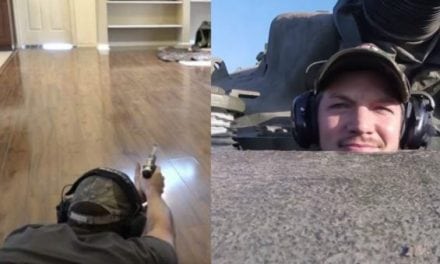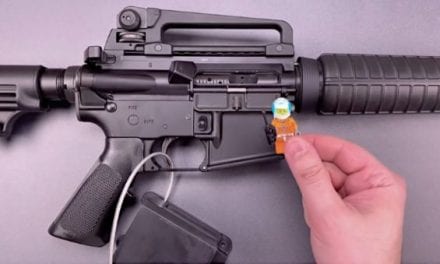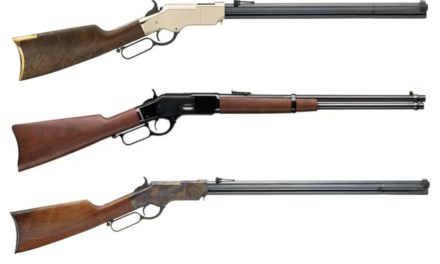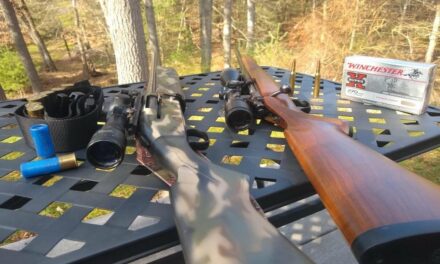by Charles R. Drago, Editor, OEL Magazine
Shortly after 10 p.m. on April 14, 1865, actor John Wilkes Booth entered the presidential box at Ford’s Theatre in Washington D.C. and fatally shot President Abraham Lincoln. As Lincoln slumped forward in his seat, Booth leapt onto the stage and escaped through the back door.
The pistol recovered from the presidential box was a silver-inlaid model of the pocket type produced by Henry Derringer, an armsmaker based in Pennsylvania.
The Derringer pocket pistol achieved its greatest popularity during the mid-1850s and was a favorite of civilians seeking a compact, easily concealed firearm for use in personal defense. Although the Derringer pistol was somewhat limited by its single-shot capacity, its light weight and small size gave it a distinct advantage over bulkier, difficult to conceal alternatives.
The Lincoln assassination – a history-changing act – ensured the permanent notoriety of the Derringer pistol while simultaneously finalizing the incorporation of the word “derringer” into the American lexicon as a common noun denoting a concealable, short-barreled non-automatic pistol. Notably, the use of the noun Derringer refers to a pistol manufactured by Henry Derringer, whereas the use of the noun derringer (sometimes spelled Derringer) refers to a pocket pistol of any make.
A Derringer pocket pistol is typified by its small size and short-barreled, single-action percussion design. The barrel of this firearm can range in length from less than 1 to 4 or more inches and is made from wrought iron browned with a chemical solution that imparts copper-colored streaks to the barrel. Partially round and partially octagonal, the Derringer barrel is flattened and slotted on top to accept a blade-style front sight and is rifled with seven grooves, right twist. The grooves are beveled at the mouth of the barrel, and caliber varies from .33 to .51 inches.
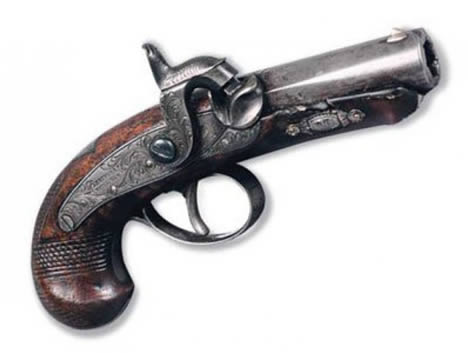
The Booth Derringer was described as a single-shot, muzzle-loading, percussion cap-fired Derringer pistol manufactured by/for the Henry Derringer Company of Philadelphia, Pennsylvania. Its notable features and markings included, but were not limited to, a black walnut stock with checkering; a barrel with an octagonal upper portion and a round lower portion; an S-shaped trigger guard; a hammer; and scrollwork on the sideplates, butt plate, stock tip, wedge plates, front sight, escutcheon, and flash plate.
The trademark DERRINGER PHILADELA was found stamped in two locations-on the lock plate and on top of the breech plug. A letter “P” inside a sunburst was also stamped as a proof mark on the left flat of the breech plug between two bands of gold.
Derringer pocket pistols were widely marketed in matched pairs, which sold for approximately $25 during the 1860s. These matched pairs were custom-made, high quality firearms that often bore gold and silver inlays. Booth, a successful actor, was able to afford a set of pistols of the quality associated with the Derringer name. Was the Derringer used by Booth to kill Lincoln one of such a pair? If so, what became of its mate?
The Booth Derringer and other artifacts associated with the assassination of Abraham Lincoln are displayed at the Ford’s Theatre National Historic Site in Washington, DC. The bullet and a skull fragment removed from Lincoln during the probing of the wound by attending physicians are currently maintained by the Armed Forces Institute of Pathology in Washington, DC.
The Booth Derringer
| Feature | Measurement in Inches |
| Overall length | 5.87 |
| Overall height | 2.79 |
| Breech plug length | 0.53 |
| Barrel length | 1.62 |
| Rifling length | 1.55 |
| Muzzle to end breech plug | 2.16 |
| Lockplate center | 1.90 |
| Lockplate | 2.62 |
| Front outside of barrel | 1.01 |
| Middle outside of barrel | 0.95 |
| Outside of hammer | 1.06 |
| Inside trigger guard | 1.04 |
| Butt width | 1.37 |












